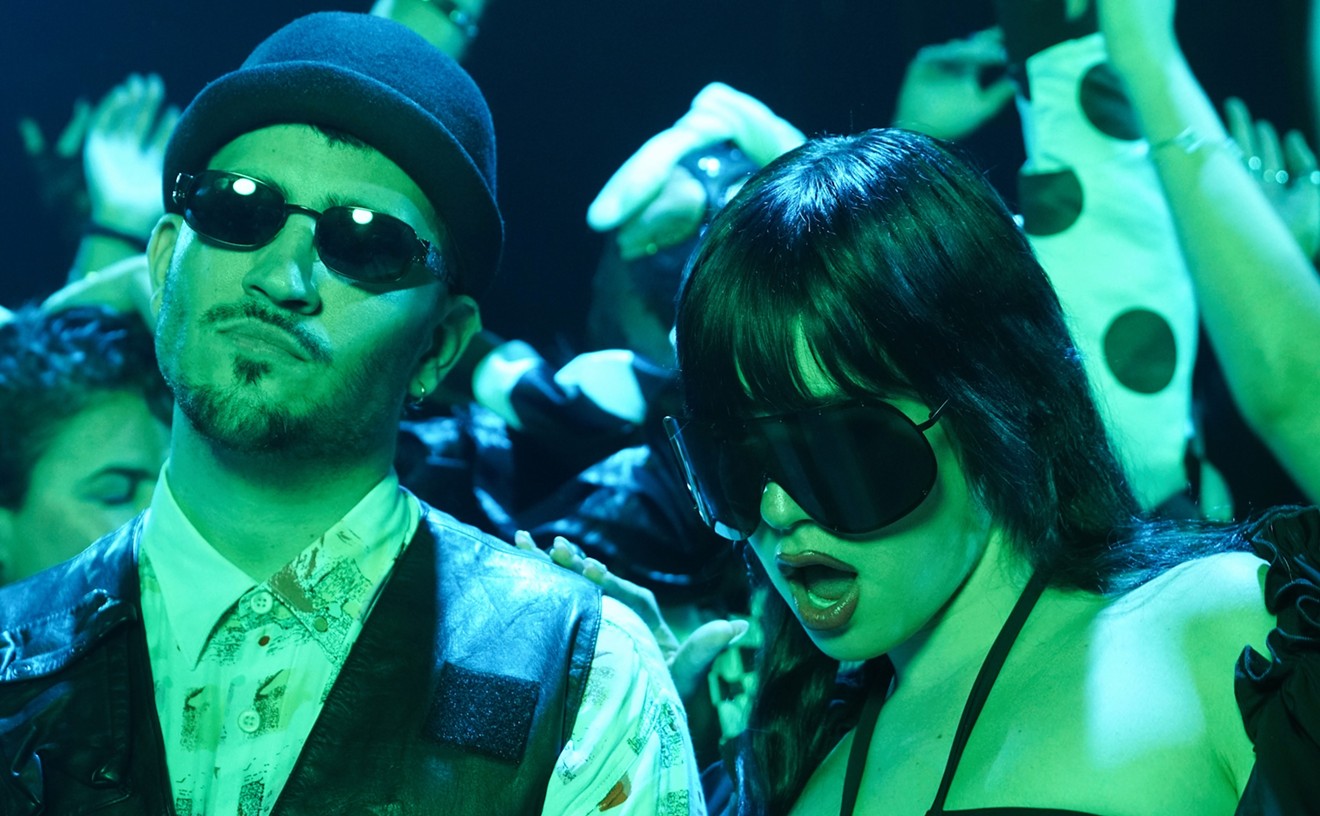Today the draw to the often-dark retro and industrial sounds of South Florida's nebulous Goth scene is nowhere near what it was in its heyday, but it does seem to be making a comeback with a new generation of Goth-goers and new-school sounds -- much to the chagrin of some diehard fans of the classics.
Makeup artist Katherine Quiel of Kendall, a Goth enthusiast for ten years, has taken off her black clothes and now sports a suntan. "Not many people are left from the old days," Quiel observes. "Some have relocated to other cities, others simply changed their ways and are not Goth anymore -- like me. People who go to these so-called Goth clubs aren't at all Goth. They just go to see 'the freak show' and make fun of people. It is becoming just like the other clubs -- not so underground anymore."
David Cordoves, a club promoter who started the once-popular Church club night on Miami Beach, agrees. "For a flash we did have a big buzz. I made a living off that for six, seven years. You'll never see that again. It was a totally different crowd that wasn't as anal as they are now." He sees little hope in the future. "I hope the kids down here can bring it back, because it is a dying breed down here."
Not everyone has given up. DJ Sin (Larry Reyes) is a new-generation Goth who throws the Sin party on Wednesdays at Club O'Zone in South Miami. He's been doing the night for a year out of his own love for the music genre, not for the money. "A night can cost $500 to $1000 and you make $700-$1000, so it basically pays itself," Sin says. "I do it as a hobby, for fun."
Determination has kept the longest-running of the Goth nights, the Kitchen Club, alive for more than a decade. The night refused to die even though its most recent venue, Club 5922, shut down for renovations. On May 10, DJ and promoter Aldo just picked up and moved north along U.S. 1. But even for this well-known night, survival has been tough. "I've DJed at different clubs and called it the Kitchen just to keep the name alive," Aldo admits. "It's something I really believe in and I'll keep doing it as long as I can. I don't care if there's [only] ten people. I'll still play for those ten people."
He will likely be playing Goth classics from Sisters of Mercy, Siouxsie and the Banshees, Bauhaus, and Peter Murphy. Aldo likens the longevity of the night, which still attracts a young crowd of mostly creative types, to the Rocky Horror Picture Show phenomenon. "I guess what makes it unique is if you went to the Kitchen ten years ago you'll hear a lot of the same songs [now]," he suggests. "You can't say that about a lot of clubs today. It's the cult-classic format."
At the Venus Room in Broward, DJ Falstaff (Jeff Spring) mixes the old with the new, sprinkling the classics with industrial and EBM (electronic body music) such as Assemblist 23 and Apoptygma Berzerk, future pop, and synth-pop artists including Wolfsheim, and De/Vision. "We decided the only way to be different was to continue the path," says Falstaff. "Broward County has been known to play more new music than Miami. Miami's really stuck to the tried-and-true formula of the Cure, Depeche Mode, and a lot of early alternative music. There's nothing wrong with that, but it never worked for us up here."
Falstaff, currently a resident at the year-old Venus Room, began DJing at the defunct Manray in Pompano Beach, a southern counterpart to the well-established Manray Goth club in Boston, which Falstaff used to frequent. He finds pleasing Goth fans old and new a heavy challenge. "I bring about 150 pounds of CDs with me everywhere I go," Falstaff points out. "Now, no trance DJ has to do that. No house DJ has to do that. They don't have to bring songs that are twenty years old with them, up to new [material]. I have to bring a catalog with me because I do still play some of the classics. I do have to have them on file in case someone goes, 'I want to hear that old song.' It's like playing 'Stump the DJ.'"
The Venus Room was briefly one of the casualties of a Fort Lauderdale ordinance that was passed in October 2000 prohibiting clubbers younger than 21 from venues featuring entertainment and alcohol. "That almost totally killed the scene in Broward," Falstaff says. After reopening behind the Coliseum in Fort Lauderdale, the club's draw fell to 50 people the first month, but since Joseph Bonilla joined the team as the club promoter in July 2001, the crowds have grown.
"In the last year and a half I've seen the scene starting to fizzle out," Bonilla says. "It's starting to come back. I can't say it's at its height. We're like the little club that could." The same could be said for the Goth scene as a whole.










